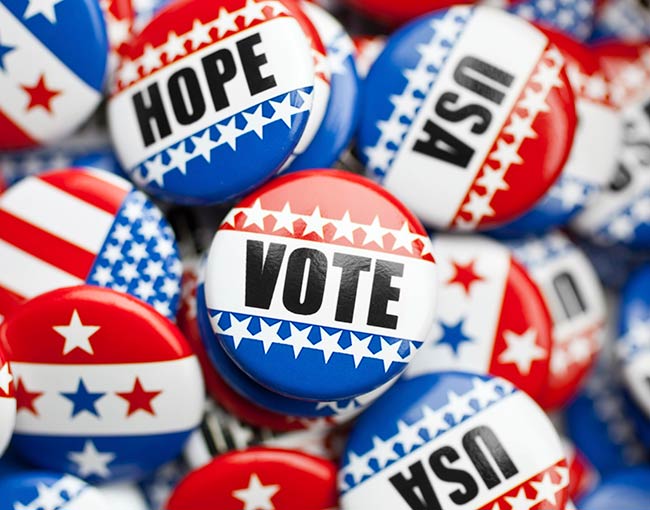The process delineated in the US Constitution for the selection of the president and vice president. Notably, the term "Electoral College" does not appear in the Constitution. The term was popularized in the early 1800s to describe the complicated process of electing the president.
A Thousand Points of Light
Before choosing the manner in which to elect the president, the Founding Fathers debated a number of options. Fundamentally, the choice was between representative or popular vote. An early plan was for Congress itself to elect the president, which was ultimately jettisoned in order to maintain adequate independence between the Legislative and Executive Branches. Instead, the Constitution calls for electors to select the president, totaling the number of Representatives and Senators apportioned to each state. Senators and Representatives may not also be electors. With the total number of electors currently at 538, 270 votes - or half plus one - is needed for a candidate to be declared the winner of the Electoral College.
I Feel Your Pain
Each state sets forth their own requirements for the selection of electors. The majority of states are winner-take-all. But Maine and Nebraska differ by allocating two electors to the winner of the statewide popular vote and further allocating one elector to each of the state's congressional districts. Nearly half of the states have even taken steps to bind their electors to prevent a "faithless elector" from voting against the winner. The Electoral College never formally meets as one body. Electors meet at their respective state capitols to cast their ballots on the first Monday after the second Wednesday in December. Congress then meets on January 6 to count the electoral votes and declare the official winner.
The Electoral College is routinely criticized for being undemocratic, with no shortage of alternatives having been proposed. In all but a few instances, however, the winner of the Electoral College has also been the victor of the nationwide popular vote.
Wrong!
With the majority of states solidly Republican or Democratic, only a handful of competitive states determine the outcome of the presidential election. Changing demographics and voting preferences vary the swing states that are in play in each election. California was once a GOP stronghold but now turns out consistent victories for Democrats. Similarly, Texas has been the bedrock of the Republican path to victory in recent elections, but Democrats have long tried without success to turn the state blue. Despite speculation by each party of expanding the electoral map this year, as is similarly theorized every four years, bellwether states like Ohio and Florida are once again expected to decide whether our next president will be Hillary Clinton or Donald Trump.





